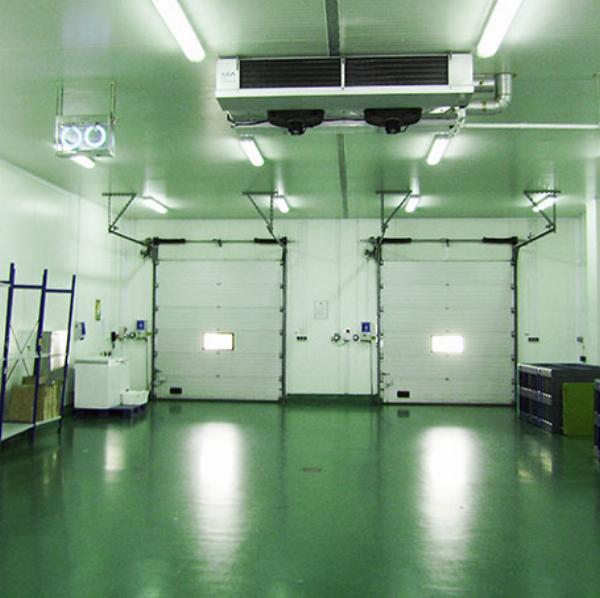How Advanced Technologies Help Improve Temperature Control in Warehouses

In the dynamic environment of logistics and supply chain management, temperature control in warehouses may not be a question of comfort but one of quality and safety for stored goods. The advent of new technologies has changed the face of temperature-controlled warehouses in their enhanced capacities to better sustain businesses at optimal conditions for product categories as diverse as highly sensitive pharmaceuticals or perishable food items. Some of these technologies do so in their bid to change temperature-controlled warehouses for improving efficiency, sustainability, and total operational effectiveness.
The Need for Temperature Control
Temperature control is essential in various industries dealing with sensitive products. For example, pharmaceutical products are sensitive to temperature changes, and thus their potency or safety may be altered accordingly. The same is the case with perishable food items; for example, the fruits and vegetables will get spoiled if they are stored at either too high or too low.
Another influential driver for proper temperature control is regulatory compliance. A number of industries are strictly regulated under specified or recommended conditions for the storage of products. Not meeting these regulations results in expensive fines and hurts the company's reputation. As such, investing in advanced temperature control technologies is not an option but a requirement for any business interested in high standards and averting such repercussions.
Advanced Technologies in Temperature Control
1. Thermostats and smart sensors
One of the most significant developments in temperature control technology is the development of smart thermostats and sensors. They can continuously track the temperature and humidity levels in a warehouse. With IoT capabilities, they can collect data in real time, permitting remote monitoring. If the temperatures deviate outside preset parameters, managers could get alerts on their smartphones or computers, thus taking corrective action immediately.
Smart sensors can be integrated into a WMS for more comprehensive data analytics. Businesses can analyze the historical data gathered in temperature measurements and trend it to make informed decisions about inventory management, such as when to rotate stock or adjust storage conditions.
2. Automated Climate Control Systems
Automated climate control systems take temperature regulation to the next step. Advanced algorithms change the heating, cooling, and ventilation processes to reflect real-time data picked up by sensors. This automation ensures that temperature changes are kept at minimal levels to ensure the best conditions for stored products.
For instance, if a sudden temperature changes, air conditioning units would automatically turn on to maintain the optimal conditions. This type of responsiveness saves product quality and reduces energy use for savings and a reduced carbon footprint.
3. Energy-Efficient Refrigeration Systems
Another key technological development in temperature-controlled warehouses is the energy-efficient refrigeration system. Traditional refrigeration units use a lot of energy, which increases their operating costs and causes environmental concerns. Nevertheless, modern refrigeration technologies, such as variable-speed compressors and evaporative cooling systems, are designed to use energy efficiently.
Such systems only modulate their cooling output based on the actual load so as not to waste energy. Besides, many new refrigerator equipment incorporates advanced insulation materials with reduced rates of heat transfer, which again adds to increased energy efficiency. Lower energy consumption reduces costs but also helps make businesses more sustainable.
4. Predictive Analytics and Machine Learning
Predictive analytics and machine learning integrated into temperature regulation processes transform warehouse management. Such technologies analyze vast amounts of data and can predict possible temperature-related problems in advance.
For instance, predictive algorithms can analyze temperature trend data at a facility in combination with weather pattern information from external sources to indicate the likelihood of a warehouse going out of temperature range. This allows managers to make proactive decisions about the temperature settings of their cooling units or schedule maintenance to the refrigeration units to safeguard the stored-up products from potential risks.
5. Real-time Monitoring and Reporting
Real-time monitoring systems increase transparency regarding the conditions in your warehouse, thus keeping a closer temperature control. These systems generate constant feeds that one can access remotely, thus allowing the manager to monitor conditions from anywhere.
Moreover, most real-time monitoring solutions have inbuilt features for automatic reporting and generating compliance reports for regulatory agencies. This makes auditing easy and gives a business proof of compliance with temperature control standards.
Conclusion
As temperature-sensitive products dominate the market, proper temperature controlled warehouses are vital. Advanced technologies in smart thermostats, automated climate control systems, energy-efficient refrigeration, predictive analytics, and real-time monitoring will dramatically change the future perspective of temperature-controlled warehouses. Companies are better positioned to ensure the quality and safety of their products while lessening energy costs and adhering to compliance guidelines set forth by each industry. Ultimately, this becomes a strategic investment in advanced temperature control technologies and an essentially compulsory action if a business wants to stay competitive in such a dynamic market. Need more information on how advanced technologies can help to optimize your warehouse operations? Feel free to visit TSSC Group.
Read this What Are The Different Types Of Cold Store Panels Available?
Note: IndiBlogHub features both user-submitted and editorial content. We do not verify third-party contributions. Read our Disclaimer and Privacy Policyfor details.







